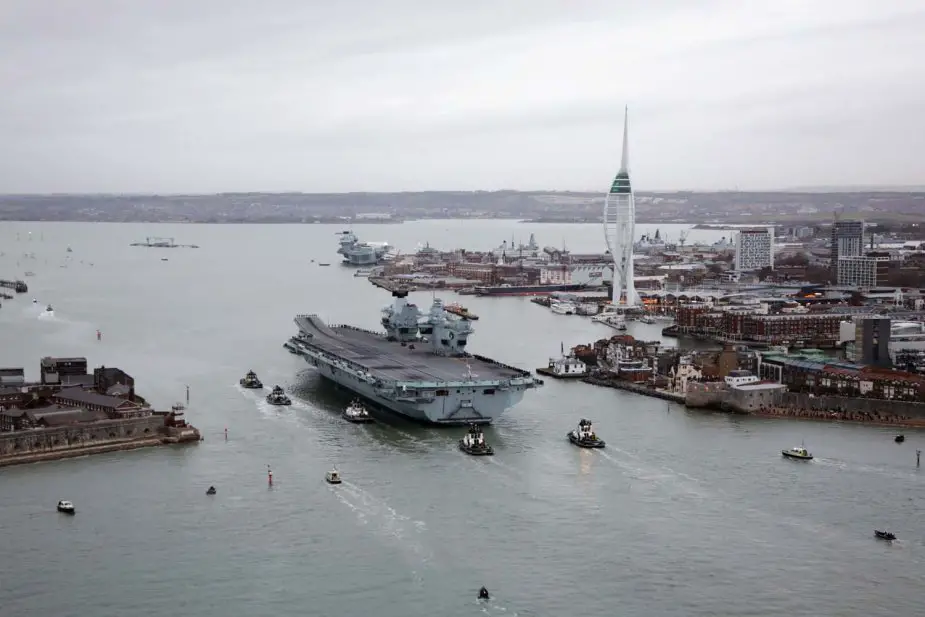Breaking news
HMS Queen Elizabeth returns to UK after Indo-Pacific deployment.
According to information published by the Royal Navy on December 9, 2021, the HMS Queen Elizabeth aircraft carrier returned home to Portsmouth after her maiden operational deployment which took the nation’s flagship to the Indo-Pacific and back.
Follow Navy Recognition on Google News at this link
 HMS Queen Elizabeth aircraft carrier (Picture source: Royal Navy)
HMS Queen Elizabeth aircraft carrier (Picture source: Royal Navy)
On a seven-month mission, the aircraft carrier and her task group of eight supporting ships, a submarine, five air squadrons and more than 3,700 personnel visited more than 40 countries.
Her F-35B stealth jets flew more than 4,000 hours – more than 23 weeks in the skies, including combat sorties bombing remaining elements of Daesh – while the ship worked with allied and partner nations forging new ties, renewing old friendships and flying the flag for Britain.
Queen Elizabeth returned after some of her escort warships, which formed a protective ring around the aircraft carrier during her operations.
The aircraft carrier and her strike group sailed a combined 500,000 nautical miles and strengthened bonds with allies, including Australia, Canada, New Zealand, France, Greece, Israel, India, Italy, Japan, Oman and the Republic of Korea.
The task group was also a notable international effort, with Dutch frigate Evertsen and US Navy destroyer USS The Sullivans sailing side by side with seven British ships on the deployment.
US Marine Corps jets were also deployed alongside the RAF’s 617 Squadron onboard HMS Queen Elizabeth, assembling the largest contingent of fifth-generation stealth jets ever seen at sea.
HMS Queen Elizabeth is the lead ship of the Queen Elizabeth class of aircraft carriers and the Fleet Flagship of the Royal Navy. Capable of carrying 60 aircraft including fixed-wing, rotary-wing, and autonomous vehicles, she was commissioned on 7 December 2017 and entered service in 2020.
Defensive weapons include the Phalanx Close-In Weapons System for anti-aircraft and anti-missile defense and 30mm Automated Small Calibre Guns and Miniguns for use against fast attack craft.
The hangars are designed for CH-47 Chinook operations without blade folding and for the V-22 Osprey tiltrotor, whilst the aircraft lifts can accommodate two Chinooks with unfolded blades.


























